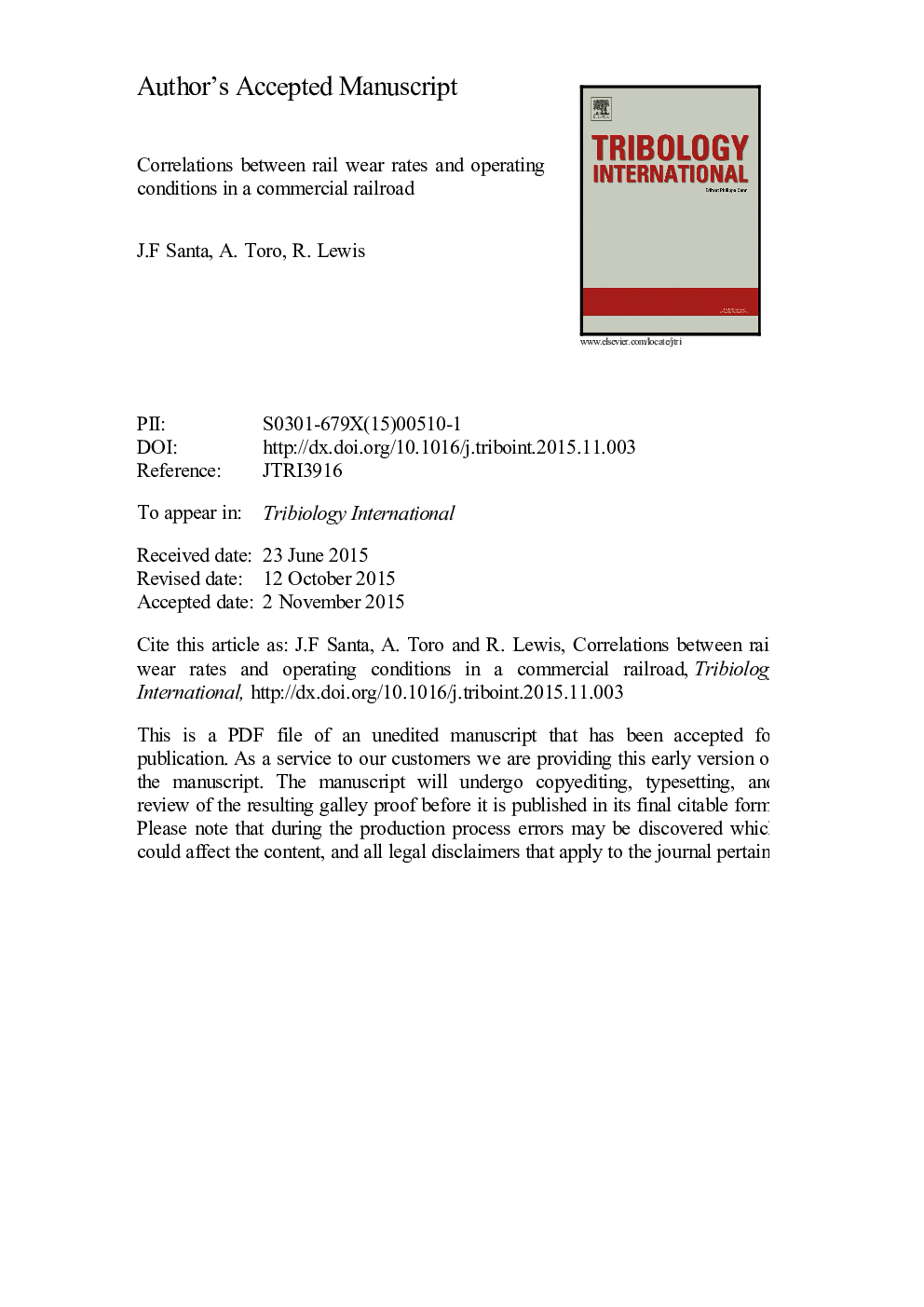| Article ID | Journal | Published Year | Pages | File Type |
|---|---|---|---|---|
| 7002662 | Tribology International | 2016 | 33 Pages |
Abstract
The rail wear rates per traffic unit (mm/MTon) in the curves of a 4.5Â km-long commercial line over a period of 9 years were measured and related to specific operation conditions. The rail corrugation was analyzed using a Corrugation Analysis Trolley (CAT) and visual inspection was carried out in order to identify the defects in the railroad. Since Rolling Contact Fatigue (RCF), artificial abrasion and corrugation were found to be the most important issues the grinding procedures used during maintenance of the railroad were evaluated to assess their effectiveness on removing the defects from the rail surface. The results showed that the wear rates in the studied railroad were several times higher than those typically found in the literature, mainly as a consequence of inappropriate grinding regimes. White layer formation and only partial removal of cracks emerged as the most relevant drawbacks of rail grinding procedures.
Related Topics
Physical Sciences and Engineering
Chemical Engineering
Colloid and Surface Chemistry
Authors
J.F Santa, A. Toro, R. Lewis,
